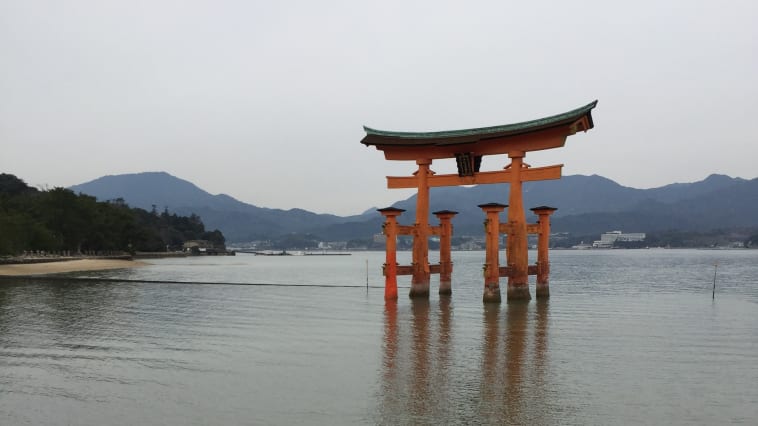Popular Topics
Trip Report
Southwestern Japan
Seeing the wonders of Kyoto, Nara, Osaka, Hiroshima, and Himeji on a week-long trip packed with adventure.
AsiaJapan7 days / March 2017
Highs & Lows
Itsukushima Shrine
Most of the temples and shrines were filled with other tourists
Itinerary Overview
After a flight from the U.S. through Seoul, South Korea, we arrived in Osaka and took a bus to Kyoto. We walked around the downtown, ate at an incredible yakiniku restaurant (where you cook your own food on a grill in the center of the table), and saw some of the stunning Buddhist temples and Shinto shrines on the west side of the city. We unsuccessfully looked for Geishas and walked through the Heian-Jingu Shrine Gate before dinner. Being engulfed in the misty and spiritual air of Kyoto was a great way to start our journey. During our next day, we again walked around the center of the city and spent most of our morning exploring the Fushimi Inari shrine and the beautiful orange torii (gates) and small shrines leading up the bamboo-covered hill. There was some great street food in the area - takoyaki (octopus wheat balls), taiyaki (fish-shaped pastries with red bean paste), and pork buns. Next, we toured Nijo castle, walked around some more, and ended our night wandering a shotengai (covered pedestrian street market) and enjoying some small bites of traditional Japanese food.
Our next day, we drove south and explored the majestic Byodoin Temple and then visited Nara, where we ate and watched some of the best mochi in Japan being made at Nakitanidou, toured the Todai-ji Temple (the largest wooden building in the world), and walked through Kasuga Grand Shrine. Although these sites were packed with tourists, the heavily wooded area around Nara is beautiful and a good escape from some of the chaos of larger cities. We also watched some of the sacred spotted deer nearby during feeding and ended the night with sushi, karaoke, and walking around in Osaka.
Osaka is a bustling city with lots of skyscrapers and busy streets, but before experiencing the full extent of it, we visited the wacky Konpeito Museum and got to help make some of the candy and learn about its Portuguese history. Next was the Umeda Sky Building, which had two escalators hundreds of feet in the air and a donut-shaped roof where we spent some time taking in the cityscape. We didn’t get the full view, as it was foggy and raining, so we set out to walk the crowded streets of Dotonbori and the pedestrian walkways lined with billboards, mini-shrines, and elaborate sculptures that lit up as bright as Times Square by nightfall.
The Shinkansen (bullet train) ride to Hiroshima the next morning got us there in just about an hour and a half, and it was a great way to see the countryside as well as a surprisingly smooth and peaceful zip through 250 miles. Once in Hiroshima, we again walked through and shopped in shotengai and explored the city before learning and experiencing the city’s devastating past. We first toured the Hiroshima Peace Memorial (also known as the A-Bomb Dome), the only structure left standing near the hypocenter of the 1945 atomic bomb that killed more than 200,000 people. It stands as a monument to peace and a lesson to humankind of the horrors of war. We spent a lot of time to reflect in the Hiroshima Peace Memorial Park, seeing the Memorial Tower, Children’s Peace Monument, Bell of Peace, Memorial Burial Mound, Memorial Cenotaph, Flame of Peace, and Memorial Museum. It was a very powerful day of contemplation and understanding, especially as American tourists. We ended the day with a classic Hiroshima dish, okonomiyaki.
We began our next day early to catch a train and ferry to Itsukushima. Eating some local treats as we walked from the ferry terminal to the famous Itsukushima Shrine, we got to explore the town and the beautiful views of the bay. The orange seaside shrine looking out at the “floating” Torii Gate took a while to fully process - it was breathtaking. Our next stop was Himeji Castle, the largest and most visited castle in Japan. It’s an architectural marvel, multiple stories with white walls and black and white tiled roofs stacked on top of each other and perched on stone bases, watching over the city. For dinner, we had another yakiniku meal in Osaka and saw the city lights at night on a ferris wheel.
Since this was a school-related trip, we spent a day visiting and meeting students from a local high school, who showed us around Osaka Castle. Its white walls and green roofs adorned with gold leaf have been reconstructed, and the castle now has a museum inside as well as a deck with views of the surrounding area. Our last dinner in Osaka was at a traditional restaurant, where we recounted all of the incredible things we got to do while in this magical country that combines old and new into a rich cultural experience.

Kyoto
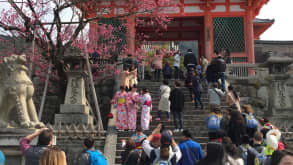
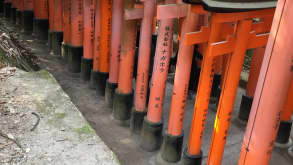
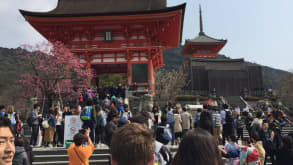 9+
9+After a flight from the U.S. through Seoul, South Korea, we arrived in Osaka and took a bus to Kyoto. We walked around the downtown, ate at an incredible yakiniku restaurant (where you cook your own food on a grill in the center of the table), and saw some of the stunning Buddhist temples and Shinto shrines on the west side of the city. We unsuccessfully looked for Geishas and walked through the Heian-Jingu Shrine Gate before dinner. Being engulfed in the misty and spiritual air of Kyoto was a great way to start our journey. During our next day, we again walked around the center of the city and spent most of our morning exploring the Fushimi Inari shrine and the beautiful orange torii (gates) and small shrines leading up the bamboo-covered hill. There was some great street food in the area - takoyaki (octopus wheat balls), taiyaki (fish-shaped pastries with red bean paste), and pork buns. Next, we toured Nijo castle, walked around some more, and ended our night wandering a shotengai (covered pedestrian street market) and enjoying some small bites of traditional Japanese food.

Nara
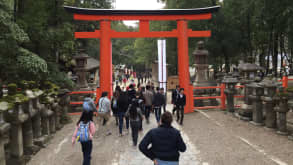
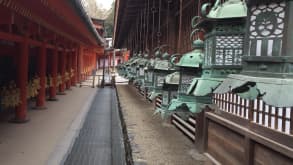
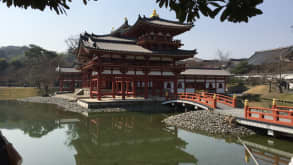 7+
7+Our next day, we drove south and explored the majestic Byodoin Temple and then visited Nara, where we ate and watched some of the best mochi in Japan being made at Nakitanidou, toured the Todai-ji Temple (the largest wooden building in the world), and walked through Kasuga Grand Shrine. Although these sites were packed with tourists, the heavily wooded area around Nara is beautiful and a good escape from some of the chaos of larger cities. We also watched some of the sacred spotted deer nearby during feeding and ended the night with sushi, karaoke, and walking around in Osaka.

Osaka

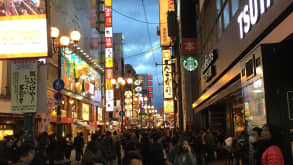
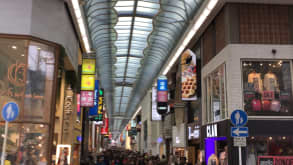 7+
7+Osaka is a bustling city with lots of skyscrapers and busy streets, but before experiencing the full extent of it, we visited the wacky Konpeito Museum and got to help make some of the candy and learn about its Portuguese history. Next was the Umeda Sky Building, which had two escalators hundreds of feet in the air and a donut-shaped roof where we spent some time taking in the cityscape. We didn’t get the full view, as it was foggy and raining, so we set out to walk the crowded streets of Dotonbori and the pedestrian walkways lined with billboards, mini-shrines, and elaborate sculptures that lit up as bright as Times Square by nightfall.

Hiroshima
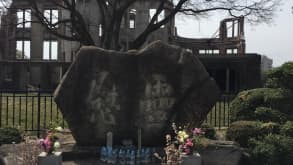
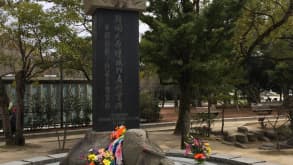
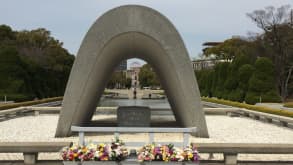 3+
3+The Shinkansen (bullet train) ride to Hiroshima the next morning got us there in just about an hour and a half, and it was a great way to see the countryside as well as a surprisingly smooth and peaceful zip through 250 miles. Once in Hiroshima, we again walked through and shopped in shotengai and explored the city before learning and experiencing the city’s devastating past. We first toured the Hiroshima Peace Memorial (also known as the A-Bomb Dome), the only structure left standing near the hypocenter of the 1945 atomic bomb that killed more than 200,000 people. It stands as a monument to peace and a lesson to humankind of the horrors of war. We spent a lot of time to reflect in the Hiroshima Peace Memorial Park, seeing the Memorial Tower, Children’s Peace Monument, Bell of Peace, Memorial Burial Mound, Memorial Cenotaph, Flame of Peace, and Memorial Museum. It was a very powerful day of contemplation and understanding, especially as American tourists. We ended the day with a classic Hiroshima dish, okonomiyaki.

Itsukushima
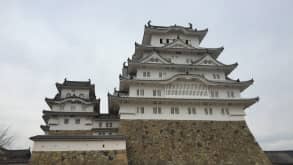
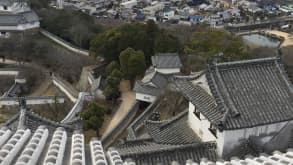
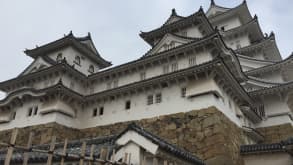 12+
12+We began our next day early to catch a train and ferry to Itsukushima. Eating some local treats as we walked from the ferry terminal to the famous Itsukushima Shrine, we got to explore the town and the beautiful views of the bay. The orange seaside shrine looking out at the “floating” Torii Gate took a while to fully process - it was breathtaking. Our next stop was Himeji Castle, the largest and most visited castle in Japan. It’s an architectural marvel, multiple stories with white walls and black and white tiled roofs stacked on top of each other and perched on stone bases, watching over the city. For dinner, we had another yakiniku meal in Osaka and saw the city lights at night on a ferris wheel.

Osaka
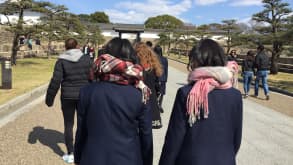
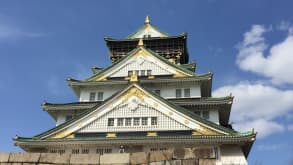
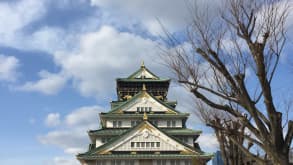 2+
2+Since this was a school-related trip, we spent a day visiting and meeting students from a local high school, who showed us around Osaka Castle. Its white walls and green roofs adorned with gold leaf have been reconstructed, and the castle now has a museum inside as well as a deck with views of the surrounding area. Our last dinner in Osaka was at a traditional restaurant, where we recounted all of the incredible things we got to do while in this magical country that combines old and new into a rich cultural experience.
Q & A
What would you have changed?
I would've spent another week or two and gone east to Tokyo and north into the mountains.Restaurant recommendations?
Get lots of street food, definitely get mochi from Nakitanidou in Nara, and make sure to try traditional foods in each of the places you go to.Tips you would give a friend?
Combine some trips to historical and traditional religious sites with walking around big cities and experiencing modern Japanese life.Packing tips?
Pack warm clothes if you're visiting in the fall, winter, or spring!Transportation Tips?
The Shinkansen is a great option for travel between major cities!
Lodging
Hotel
Hotel
Hotel
Hotel

